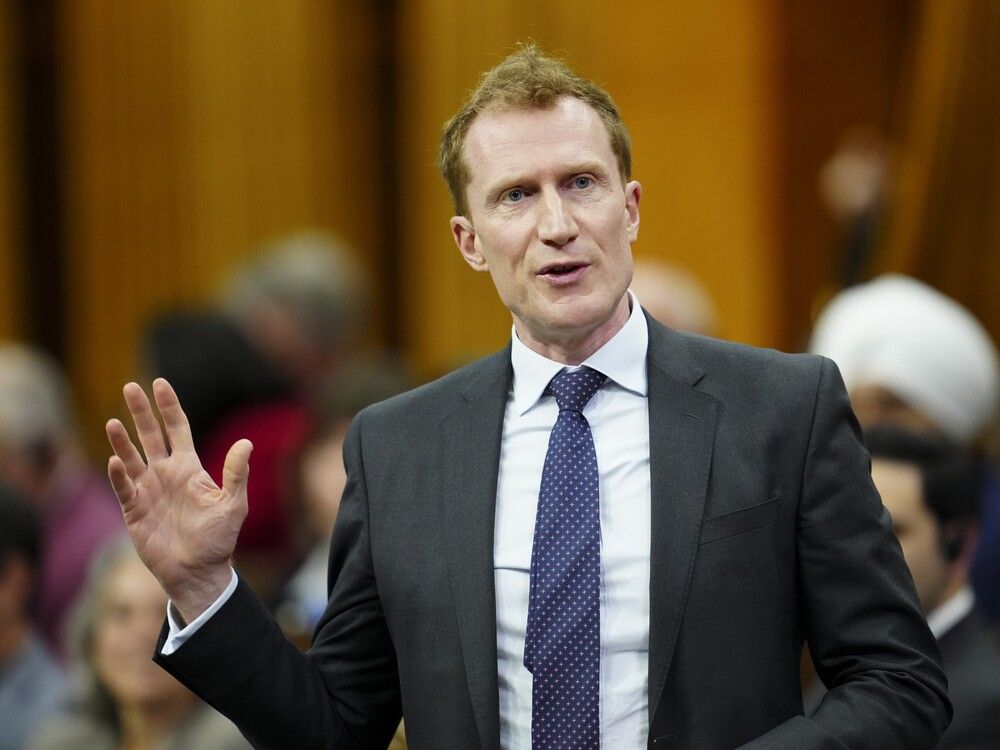Carlo Dade: ‘Shovel ready’ approach is why Canada’s infrastructure rankings are dropping

A ‘shovel worthy’ approach is the solution

Article content
If Canada’s prospects for COVID recovery and economic growth crash in the forest of world business opinion, does it make a sound? Apparently not in Canada.
Advertisement 2
Story continues below
Article content
Canada depends on trade for over two-thirds of its gross domestic product (GDP), and a little over a decade ago Canadian users placed the country in the top 10 of global infrastructure rankings. As trade has grown in importance, confidence levels in the country’s transportation infrastructure systems have fallen and were ranked at 32nd in the world in 2019 — below all of our major competitors.
The United States has also fallen in the rankings and dropped two points from 11th to 13th, something hard to miss given the incessant public alarm raised by President Joe Biden, Transport Secretary Pete Buttigieg and other U.S. officials who say any drop is unacceptable.
Yet in Canada, our decade long decline has not raised the same level of concern. To be sure, there have been moves to address the transportation infrastructure file, such as the creation of the Pan-Canadian Competitive Trade Corridor Initiative, the National Supply Chain Task Force and the National Infrastructure Assessment.
Advertisement 3
Story continues below
Article content
But governments are easily overwhelmed and sidetracked. Until elected leaders, federal and provincial, follow the U.S. and forcefully commit to solving the transportation infrastructure problem, it will only get worse. Governments have given the appearance, correct or not, of a lack of commitment, especially when contrasted to the reaction south of the border. Bold action is needed and it is needed now.
What Canada lacks, and is critical to the improvement of its rankings, is a long-range, evergreen national plan.
Trade contributes three times more to Canada’s GDP than it does to the U.S. This money pays for COVID recovery, social services, a green future and all the things Canadians and the government say are priorities.
Advertisement 4
Story continues below
Article content
But the reality is that there are three kinds of infrastructure in Canada: the infrastructure people want, such as parks and hockey rinks, the infrastructure they need, such as hospitals and green transit, and the infrastructure that pays for wants, needs and government priorities. For Canada, that is trade infrastructure.
Canada’s drop in global rankings is indicative of a long-simmering issue. What is surprising is that the decline has been accompanied by successive government capital spending and massive private sector investment. Yet such spending efforts haven’t been enough for those rating the country’s infrastructure.
The reason why is identified in a recent analysis by the European Auditors, which compared how the EU, U.K., Australia, and Canada manage large transport infrastructure projects. The study found Canada to be the only jurisdiction lacking coherent, institutionalized long-term co-ordination and planning.
Advertisement 5
Story continues below
Article content
The shorthand for this lack-of-planning approach is “shovel ready,” a term Canadians are familiar with thanks to its use in the many government spending announcements since 2008.
Using shovel ready to guide spending, even for emergency stimulus, is evidence of a lack of long-term planning. When we award funding by what is ready instead of following a long-range, intelligence-based plan, we signal to domestic users and international customers that the country has not optimized infrastructure improvements to facilitate delivering goods and services. By definition, shovel ready relegates to secondary consideration whether investments are of top priority, will produce maximum return on investment, are of long–term value and able to increase supply chain competitiveness. All these criteria define a “shovel worthy” approach.
Advertisement 6
Story continues below
Article content
-

Ontario budget promises billions for infrastructure, critical minerals; could eliminate deficit sooner than expected
-

Port of Vancouver CEO calls for climate change action to reduce future trade bottlenecks
-

B.C. flooding could be Canada’s costliest disaster as cut-off Port of Vancouver snarls supply chain
-

Mark Carney sees US$2.5 trillion annual investment opportunity in energy infrastructure
Shovel ready is the wrong way to make large investments and an even worse way to manage serious long-term challenges, including mitigating impacts of climate change and harms to traditionally marginalized communities. These challenges are best handled as components of a shovel worthy approach.
The first step to remedy this is to follow what our competitors have done: produce ongoing, co-ordinated long-term national plans. As others have found, fixing trade infrastructure also requires bringing in the private sector as a partner, not a ‘consultee.’ The private sector is not only comprised of owners, operators and users of transportation infrastructure, but it has unique, often proprietary knowledge critical for shovel worthy decision making.
Advertisement 7
Story continues below
Article content
The federal government’s National Infrastructure Assessment is a quiet, yet potentially promising start to catching up with competitors and reversing the country’s decade-long decline because it lays the basis for ongoing national trade infrastructure plans. This needs to succeed. For that to happen, improving the country’s trade infrastructure and committing to permanent national plans need to be an articulated priority by government and opposition, both federal and provincial.
Our competitors have proven that solving a country’s trade infrastructure problem is eminently doable. A new report from the Canada West Foundation lays out how Canada can follow the paths taken by its competitors to climb, instead of drop, in global rankings.
Carlo Dade is director of the Trade and Investment Centre at the Canada West Foundation. The Canada West Foundation’s eight-year study of Canada’s trade infrastructure challenges and recommendations to address them, From Shovel Ready to Shovel Worthy: The Path to a National Trade Infrastructure Plan for the Next Generation of Economic Growth, was released May 10, 2022.
Advertisement
Story continues below









